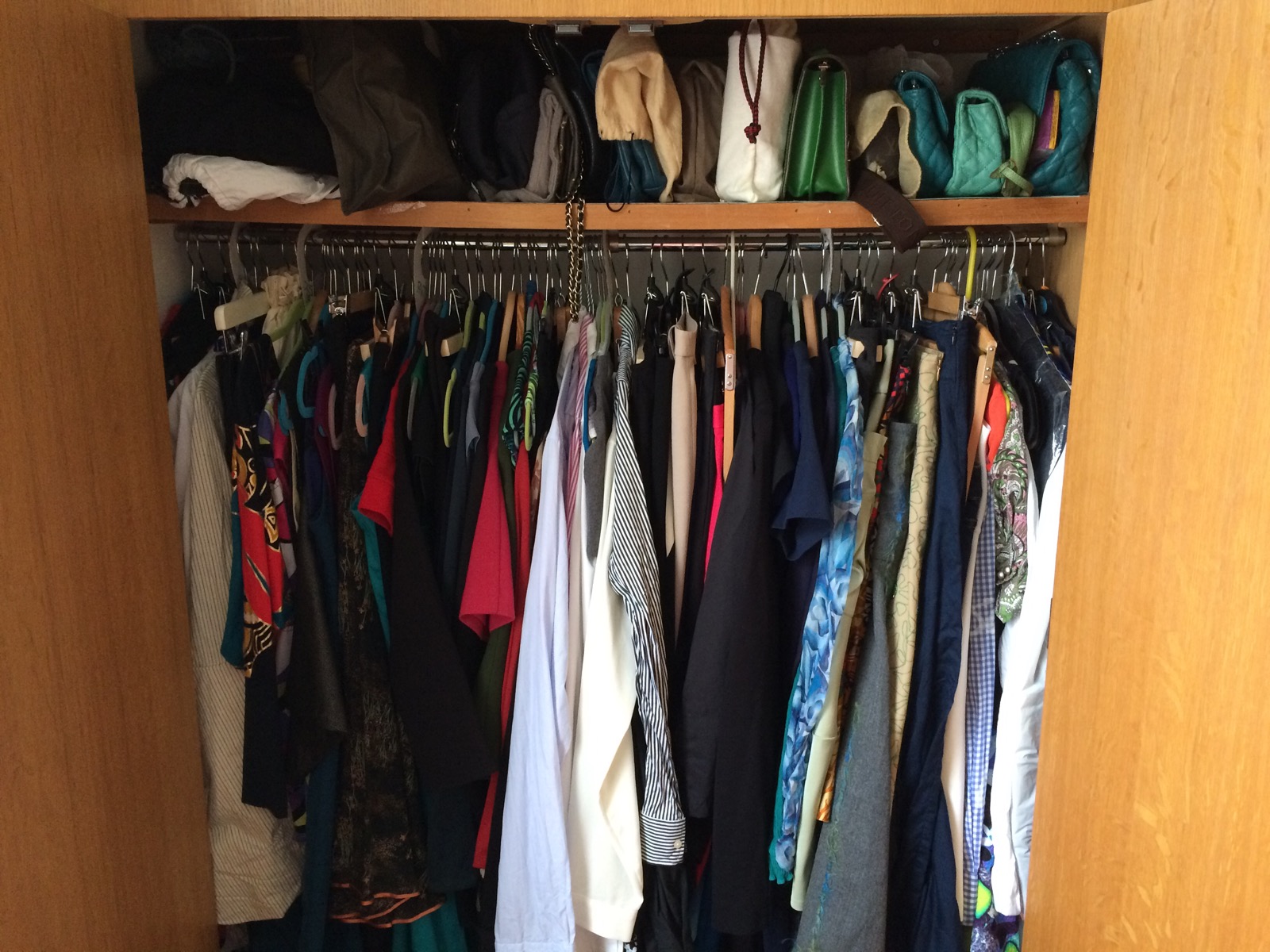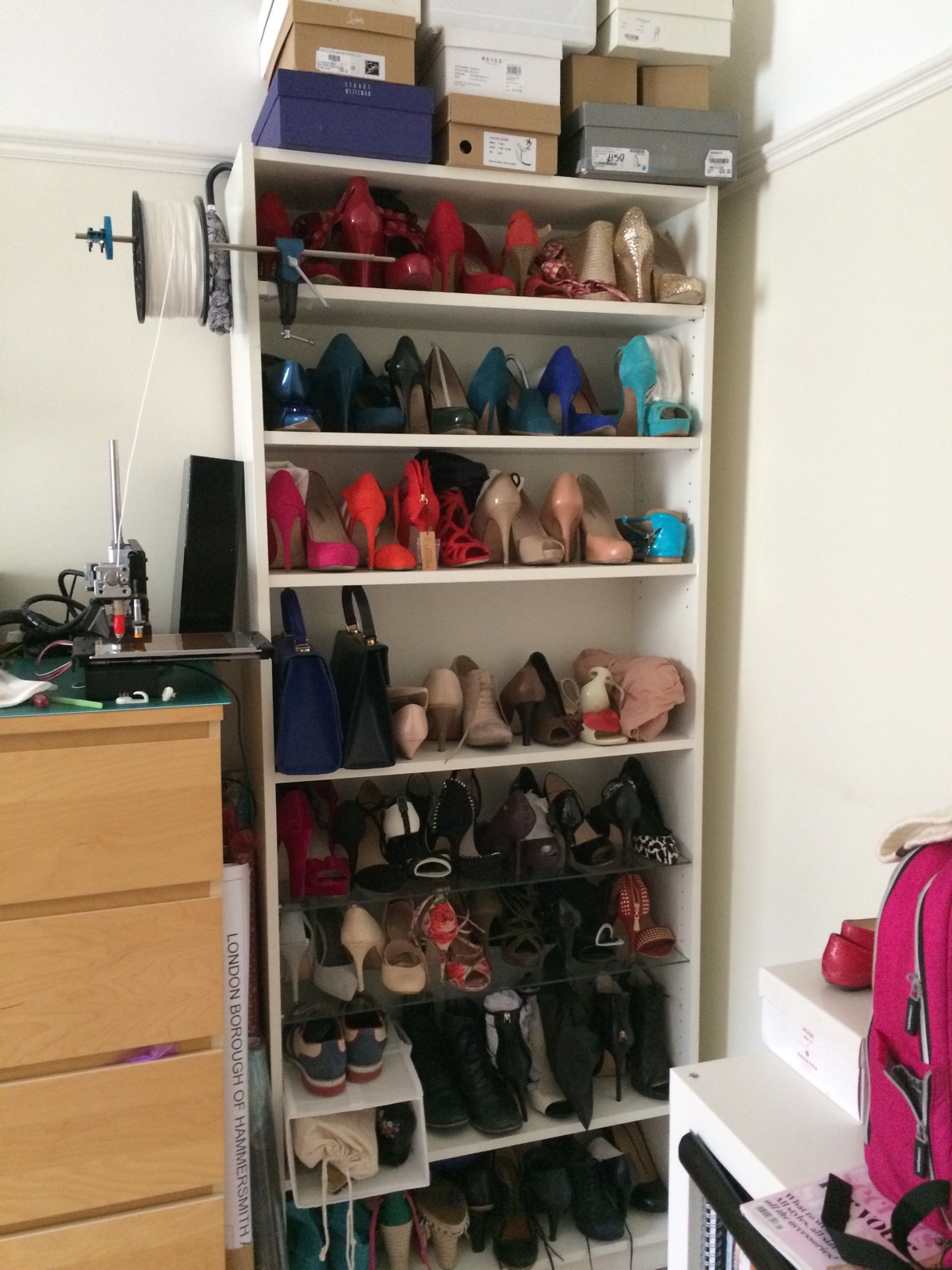The basis of User Experience is “who is the user” and “what do they need”. I have applied these principles to my wardrobe. Here’s how.
primary wardrobe usage: getting dressed for what the day holds
I use my wardrobe for getting dressed in the mornings, and for putting clothes away in the evenings (or after laundry). When I’m getting dressed, it is for a day out of the house, and I will typically know what I am doing that day and evening. (I have a special drawer with comfy house clothes if I’m staying in).
There are 4 scenarios for my most frequent outings:
– Get dressed for work (3-5 days / week)
– Get dressed for work when there’s a party / date night to go to in the evening (1 day / week)
– Get dressed for the weekend (2 days / week)
– Get dressed for a special event (less often)

This means that the predominant clothes types I will need are work-appropriate ones, closely followed by a group that we will call “double duty”. The ones that are work appropriate and can also take you out in the evening.
I know the “double duty” section is theoretically used less often than the casual weekend clothes, but in practice I tend to prefer them to the pure work wardrobe. And given they could be worn 7/7 days, they do have a very high priority.
PRINCIPLE: Use cases based on a persona (me).
True user experience begins with the user and his/her needs and goals. In this case, the user is me, and my goal is getting dressed appropriately for the events I will be attending that day. In this example, my goal can be broken down into 4 use cases. Each of those needs to be designed for.
”pretty” methods haven’t worked for me
Everyone advocates sorting one’s closet by type. All the skirts together, then the shirts, then the dresses and jackets and jeans. This means that you can easily see All The Shirts, but doesn’t mean it’s easy to match them to the skirts (Or trousers?) further down the rail.
Some slightly more OCD people do it by colour (guess how I know this…). All the blue things, then the whites, then the blacks… It looks lovely in magazine pictures! But unless you want to dress like a badly filtered instagram of yourself, it’s not very useful.
I have tried them all. I once even did progressive seasonal groupings (warmer weather to cooler weather, left to right) in an effort to dress myself efficiently in the schizoid London weather of the Spring and Fall. That fell apart soon enough, as I was using warmer weather clothes with a jacket on top more than anything else.
it all started with a division
Then a few months ago, a friend of mine came over and saw that my wardrobe was physically split in half. There were two sliding doors, and you couldn’t have them both open at the same time. Every single day, I would need to open both in order to get dressed.
She suggested I use the physical split to divide my clothes into “can go to work” vs. “should never be seen at work”. We went ahead, audited all the contents (she made me try on every. single. item. I love that woman!), and rearranged the clothes. I put the “overlap” clothes into their “most likely” side, based on past usage history.
Given that 5/7 days I need “can go to work” clothes, I was simply opening half the wardrobe on weekday mornings. Which meant the things I needed most often were easier to get to, and my life was simpler.
PRINCIPLE: First order retrievability
Life is faster and simpler when the things we use most often are the most reachable. If we add to this the fact that humans have extraordinarily good muscle memory, arraying all things methodically and with usage frequency in mind makes your life better and saves time.
then I re-discovered usage scenarios
Recently, (after a house move that left me with a different wardrobe) we took that principle one step further, and discovered 4 groupings, one each for my 4 scenarios above:
– Work (things I would only wear to work)
– Double duty (acceptable for the office, but can go out too)
– Casual (only for weekends)
– Special occasion / Party (black tie, night at the opera, christmas party, etc…)


It now is infinitely easier to get dressed in the mornings, because I only need to look at the one section that matches my day’s scenario. I have reduced my choices even further, by creating more groupings!
PRINCIPLE: Reduce decision fatigue and analysis paralysis (cf. Paradox of choice)
Having too many options can cause humans to freeze up and not be able to make a decision. And having to make decisions causes humans to become tired. It is much easier to make a decision in the morning than it is in the evening, because as the day wears on, our “quota” of decisions is drained.
taking it further: plan entire outfits
Some of my friends (including the one who helped me do this) like to arrange their entire outfits for the week on the weekend so they will be ready to roll out of bed and into any outfit.
I enjoy putting outfits together on the fly, and am not willing to go that far. I will, however, be creating three full outfits (jewellery, undergarments, belt, scarf, jacket – but no shoes) for those days when I cannot drag myself out of bed be that creative before caffeination, but still have to look pulled together.
PRINCIPLE: Organise when you have the capacity, and use it when you need it most. Not sure what the formal term for that is; Be prepared, perhaps.
next up: the shoes!
Soon enough, I will also do that for my shoecase.

I love looking at my colour-coordinated collection, but I know that the way I choose the shoes is not based on colour or heel height.
While colour and heel height do matter, usage is the real determining factor. Some high heels are comfortable enough to walk the length of Portobello market! But espadrilles, regardless of heel, should never be out in the rain.
So for shoes, it comes down to usage (amount of walking and height required for the day) and the weather. Once I figure this out, maybe it will make a blog post too.
